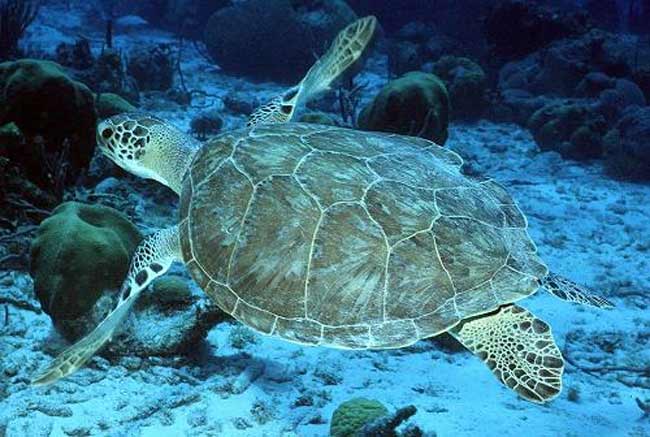Sea Turtles' Mystery Hideout Revealed

Once sea-turtle hatchlings hit the surf, they vanish for up to five years. Where the half-dollar-size tots spend these "lost years" while ballooning to the size of dinner plates has been a mystery, until now.
New research, published today in the online edition of the journal Biology Letters, indicates the green sea turtles (Chelonia mydas) hide out in the open ocean, where they feast on jellyfish and other marine creatures.
Not only did the researchers spot their short-lived sea homes, but they discovered that these reptiles, thought to be lifelong vegetarians, are actually meat eaters as juveniles.
The results help to solve a 50-year-old mystery about the hideouts. “This has been a really intriguing and embarrassing problem for sea-turtle biologists, because so many green-turtle hatchlings enter the ocean, and we haven’t known where they go,” said study team member Karen Bjorndal, a zoologist and director of the University of Florida's Archie Carr Center for Sea Turtle Research.
Before this study, scientists had two "snapshots" that provided scant clues about the missing information on the lives of green turtles: When they hatch, the 2-inch-long (5-centimeters) sea turtles push through seemingly colossal surf. Then, between three and five years later, the now juveniles reappear closer to shore.
"Literally, when green turtles run off their nesting beach and into the ocean as little hatchlings, they disappear. And nobody sees them again [for years]," Bjorndal told LiveScience.
The scientists collected samples from the shells of 44 green sea turtles at a site near Great Inagua in the Bahamas. They analyzed heavy and light stable isotopes of carbon and nitrogen from both the oldest (earliest-grown) and newest sections of the shells. The isotopes act as fingerprints for an animal's diet (carnivore or herbivore) and where in the ocean the animal lived.
Sign up for the Live Science daily newsletter now
Get the world’s most fascinating discoveries delivered straight to your inbox.
The results indicated the green sea turtles spent their lost years in the deep ocean, feeding as carnivores, before moving closer to shore and switching to a vegetarian diet of sea grasses.
The findings have implications for conservation of the green turtles, because as Bjorndal explained, "you can't protect a species if you don’t know where it is."
- Top 10 Species Success Stories
- Image Gallery: Under the Sea
- Vote Now: The Cutest Animal Babies
Jeanna Bryner is managing editor of Scientific American. Previously she was editor in chief of Live Science and, prior to that, an editor at Scholastic's Science World magazine. Bryner has an English degree from Salisbury University, a master's degree in biogeochemistry and environmental sciences from the University of Maryland and a graduate science journalism degree from New York University. She has worked as a biologist in Florida, where she monitored wetlands and did field surveys for endangered species, including the gorgeous Florida Scrub Jay. She also received an ocean sciences journalism fellowship from the Woods Hole Oceanographic Institution. She is a firm believer that science is for everyone and that just about everything can be viewed through the lens of science.










